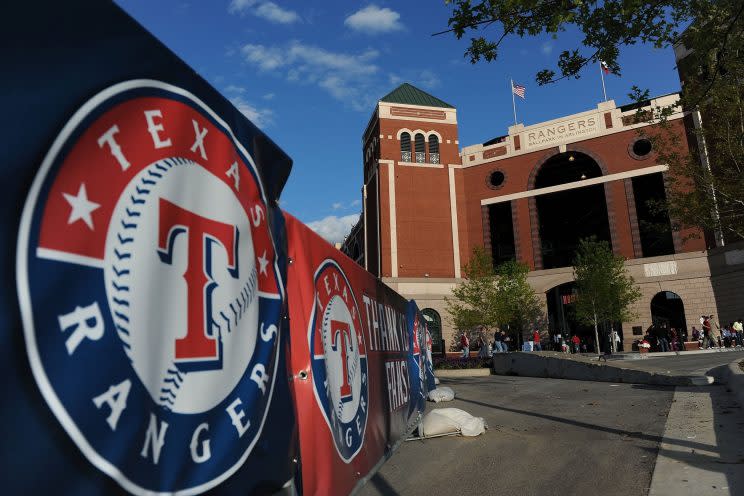Texas Rangers sexual assault case proves hazing must stop

It shouldn’t come as a surprise that we’re talking about another hazing story in sports. And yet, the nature of the allegations surrounding some Texas Rangers’ prospects are so disturbing, that it’s hard not to be shocked.
Eight Rangers’ prospects were questioned by police, and at least four are expected to be charged after a video surfaced of the players sexually assaulting an underage teammate as part of a hazing ritual, according to Jeff Passan of Yahoo Sports.
Two of the men expected to be charged include the 19-year-old brother of Rangers second baseman Rougned Odor, who is also named Rougned, and 19-year-old catching prospect Yohel Pozo.
The details of the alleged assault are horrifying, yet consistent with other hazing stories that have emerged in sports in recent years. ESPN chronicled at least 68 different instances of hazing in high school, college and professional sports from 1980 to 2002. Many of those include incidents that were sexual in nature.
That list ends in 2002, but the stories continue. It’s incredibly easy to go online, type “hazing in sports” into your search bar, and find a number of recent results. A former Virginia football player sued the University over hazing in October. A high school football team in Oregon cancelled its season after 11 freshman were hazed by upperclassmen in September. A high school in Tennessee was said to have a “culture of hazing and bullying” even before three players were charged with raping a teammate in August.
And those are only the stories that get reported. According to a study performed by the Vanderbilt Medical Center in May, 47 percent of student athletes are hazed throughout their career. Only eight percent, however, recognize the behavior as hazing.
That’s a staggering number, and demonstrates just how many of these stories reach the light of day. Even in the case of the Rangers, a player not involved in the hazing reported the assault to a member of the organization. Had that player not come forward, this alleged assault, like many others, may have gone unreported.
Given the nature of the Rangers’ allegations, and the countless other stories we’ve seen, it’s incredible that a culture of hazing in sports can exist in 2016.
Let’s be clear here, we’re talking about all forms of hazing, not just the truly horrific examples. There’s nothing offensive about sending a rookie to pick up a massive coffee order while dressed in his full uniform. It’s embarrassing and maybe somewhat demeaning, but it’s not offensive. It’s easy to point to that and say, “look, not all hazing is bad.”
Even if that’s true, what’s the point? It’s silly, and it might lead to a stray blog post or two (some of which we’ve published here), but what is the purpose of it all? Saying “that’s the way it’s always been” is a bad excuse. And while we might buy that the coffee run in full uniform creates a sense of team-building, there are other, more-effective ways to do that and they don’t involve embarrassing anyone.
That’s not to say baseball, or sports in general, can’t be fun. But hazing, even the kind we consider “mild,” isn’t the right way to accomplish that. At its least harmful it’s degrading and embarrassing. At its worst, it’s criminal.
There’s not a good argument to justify hazing in any form. Given all the examples we’ve seen in recent years, it’s unfathomable that this is still a conversation we need to have in 2016.
More MLB coverage from Yahoo Sports:
– – – – – – –
Chris Cwik is a writer for Big League Stew on Yahoo Sports. Have a tip? Email him at christophercwik@yahoo.com or follow him on Twitter! Follow @Chris_Cwik


